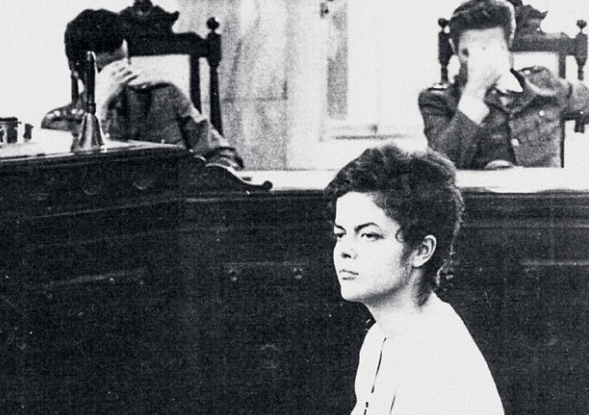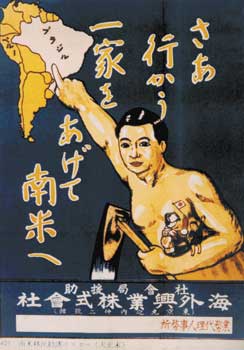Fake and oversexed version of Brazil helps selling anything in Holland.
The Dutch are quite interested in Brazil. No doubt about that. The attraction between the two countries goes back to the XVII century, when the Dutch West Indian Company lead by Maurits van Nassau overtook Recife and Olinda from the Portuguese and ceased the double opportunity of supplying local landlords with African slaves to work in their sugarcane plantations and distributing the final product in Europe. Many paintings and drawings from that period still hang in the best Dutch museums as Het Rijksmuseum in Amsterdam and Het Mauritshuis in The Hague, with realistic representations of all that looked very exotic to Dutch eyes at the time: from black slaves to tropical animals and plants.
“Braziliaanse landschaap met huis in aanbouw” by Dutch painter Frans Post
More than 400 years later, that mutual interest has only grown, as stated on the International Relations section of the Dutch Government website :
“Relations between the Netherlands and Brazil are outstanding. Economic growth in Brazil offers the Netherlands a wealth of trade opportunities. The Netherlands is Brazil’s fourth-largest export market. “
Brazil is also an important export market for The Netherlands. In 2014, the Dutch exported US$ 3,6 billion worth of industrialized goods to Brazil, mainly heavy machinery and chemical products. according to the Dutch-Brazilian Chamber of Commerce.
Dutch interest in Brazilian culture is also a fact. Most large Dutch cities feature at least one Brazilian bar, restaurant, shop and dance or language school. Brazilian musical events have been very popular for decades. Caetano Veloso & Gilberto Gil recently played to a sold-out Concertgebouw in Amsterdam despite the price tag of more than 60 euros for the cheapest seats.
Although official and reliable data on the number of Brazilians living in Holland are difficult to find, the Brazilian Foreign Ministry estimates that they were roughly 22000 in 2014. There is also a considerable number of Brazilians living in Holland illegally. Most of them earn a living by cleaning houses (one of the few jobs a foreigner can still do in Holland without a valid work permit). This (illegal) phenomenon is so well-known in Dutch cities that one of the largest insurance companies featured two Brazilian cleaning ladies in its TV commercial back in 2004.
Since then, Brazilian imagery has been regularly used in Dutch TV spots to sell anything from cars to desserts. So far so good. The problem is that the image of Brazil being currently used to help selling Dutch products has lost its realism along the way. It’s mostly rather oversexed, fake, outdated and often inaccurate. If the economic and cultural exchange between the countries is so intense, why is it so difficult for Dutch creative agencies to depict a Brazil that is more real and accurate and less stereotypical?
Some examples:
This so-called Brazilian farmer who supposedly supplies Appelsientje with his best oranges, has an outrageously Portuguese accent :
It’s a bit like using a Surinamese or Indonesian actor to portray a Dutch “boer”.
Still talking about accent, last year Batavia got a beautiful brunette girl in a bikini ( how original!) to fake a supposedly Brazilian accent that, if anything, sounded like a Spanish one:
The caricature of Brazil is completed with the tropical bird, a relaxed favela dweller on a hammock and Carnival, of course. Apparently, despite the fact that there are 20000 Brazilians living in Holland, let’s say 10000 women, the production company that shot this commercial couldn’t find one who spoke Dutch with a real Brazilian accent. She didn’t even need to look good since the model just lip syncs to a previously recorded voice-over. Clearly they just didn’t try. We must give them credit to ask a real young Brazilian fashion designer to create the dress, but still …
The dress created by Pedro Lourenço turned out to be a challenge to Dutch girls, so Linda Lab organized a test to teach Dutch girls how to wear it, with salsa on the background. Again, no Brazilian girl was invited.
On the other hand, broadcaster Veronica didn’t have a lot of trouble finding enough Dutch-speaking Brazilians girls to play football in lingerie for their Lingerie WK.
What they were selling was not very clear, but they certainly helped Veronica increasing their male audience. If you don’t understand Dutch, don’t worry. You have been spared a lot of bad taste sexist comments.
Brazilian music is another common feature on Dutch TV spots. That is, what the Dutch creatives think is Brazilian music. Let’s get this straight once and for all: SALSA IS NOT BRAZILIAN MUSIC.
Samba is and the two are distinguishable music styles. Even that famous sticky club hit from 1997 called Samba de Janeiro, that was a huge hit then and is still played a lot in Holland, has very little to do with samba. It was in fact produced by Germans.
Also last year, Gerard Joling, one of the best-selling Dutch music stars who’d never before had been associated with Brazil or football made that same common mistake. Although we are not certain if his song Rio classifies as salsa, it certainly doesn’t sound Brazilian at all.
The funny thing here is that he took the time and invested money going to Brazil to film his videoclip. It’s a pity that his musical producer didn’t invest anything in getting to know Brazilian music. Any good Dutch musician with a little of world music knowledge could have helped him.
This is precisely the point we want to make: Brazil in Holland is good to be used as a colorful background, as an ideal of laid-backness and (mostly female) beauty that sells and has been selling for decades. A lot of the same for a long time. But Brazil has much more to offer and has changed a lot in recent decades. While the Brazilian community in Holland has grown and changed, more and more Dutch citizens are visiting Brazil, either for tourism or to take advantage of the economic opportunities that arise with Brazil recent economic growth, as proved by that statement on the Dutch Government website and by regular large official trade missions to Brazil. From all international visitors who were in Brazil during last years’s World Cup, the Dutch were the ones who stayed the longest and spent the most. They certainly didn’t spend their money dancing to salsa, buying Korean cars or eating fictitious Brazilian desserts which real Brazilians never heard of. In fact, research commissioned by the Brazilian Tourism Board ( Embratur) shows that what the foreign visitors appreciated the most in Brazil was its people, their hospitality and the diversity of their culture.
Now, with the Olympic Games in Rio coming up, it would be a good time for Dutch brands and their creative agencies who constantly borrow the imagery of Brazil to sell their products to start investing a bit more in discovering and representing what Brazil really is, instead of nostalgic and sexists stereotypes: That would in turn certainly help them opening the doors to Brazilian enormous, young and growing consumer market.
© Braziel, 2015
Read more












































































